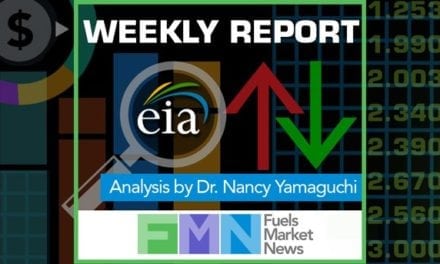Automation software might be considered the brain and nervous system of the process, but the actual organs of site operations—the valves, registers, meters, and tank gauging equipment (among others)—make up the bones, muscles and organs. A fair amount of progress has been made in these areas as well, and in many cases modern hardware is key to making an automation process work.
“Obviously, a newer generation of software is going to talk to advanced hardware to get better monitoring and control as far as what is happening at the rack,” said Verhage. “And now you have access to that remotely so you don’t necessarily have to be at the facility all the time to handle certain types of alarms. Of course, other alarms require all hands on deck. If you’re not watching it, suddenly you may have a seeping valve or something that you would not otherwise notice.
The Hardware Side
Automation can also facilitate proper maintenance and reduce unexpected downtime throughout the plant or terminals fueling infrastructure. Automated solutions linking software to electronic/digital-enabled components tend to provide more granular information on the service cycles and operation of the various components in use at the site and can provide operators with insight as to potential failure points and ultimately more time to conduct preventative maintenance instead of responding to emergency failures.
One area of advancement where hardware can link with software are the meters, registers and presets.
Liquid Controls, for example, provides meters, registers, digital-control valves and flow computer options. Engineered packages are available for high-end, automated batching and blending systems, as well as for basic electronic preset or mechanical registration systems. A meter-mounted LCG POD pulser is available for pulse output to electronic register.
Similarly, FMC Technologies Smith Meter Products provides the Genesis Series meters; AccuLoad™ Electronic Preset products and the Evolution ETR-1000 register which can all be integrated for an efficient and easy-to-use automation package.
While all of these technologies have mechanical roots, electronics and digital integration can provide some advantages.
“A lot of the smaller companies that operate bulk plants typically run mechanical registers and presets for all of their products, and certain cases the smaller terminals are still mechanical as well,” said Kevin Nugent, Liquid Control’s regional sales manager for stationary applications. “The more progressive operations see the benefits of going to electronics, in many cases from observing the newer trucks that they’ve purchased. They buy a truck and see how well the electronics work and then consider upgrading the bulk plant to get similar capabilities. Now they have a synergy throughout the company centered on electronics.”
Nugent noted that the biggest drawback to mechanical components is that they can wear out faster. They are outside all of the time; they see temperature changes and other weather conditions and components physical wear against each other. “When you have a meter, say at a smaller bulk plant with a mechanical preset, a lot of times we will offer electronic because you have basically the same price as mechanical,” he said. “When mechanical components wear they will either give away extra product or simply wear to the point where there’s going to be a failure. Also, when you have a very high resolution pulser that is counting the rotation of the meter–and the higher the resolution the better–your accuracy improves and because of the lack of wear you sustain your accuracy for a greater length of time.”
Nugent noted that the electronic components in many, but not all, cases tend to be cost competitive or even cheaper than the traditional mechanical solutions. As an exception some of the larger valves in the 3” or 4” size are a bit more costly versus mechanical, but there were still cost savings over time from efficiency and lack of wear.
Looking at other bulk plant/terminal hardware solutions, where tank gauges are concerned both OPW and Veeder-Root have modern offerings with enhanced capabilities.
OPW’s SiteSentinel® iSite automatic tank gauging system provides complete inventory, delivery, automatic reconciliation and environmental compliance information for as many as 256 USTs and/or ASTs, 1,000 external sensing devices or a combination of both, through a single console.
Veeder-Root’s Mag-FLEX is specifically designed for monitoring fuel levels in above ground storage tanks. The Mag-FLEX monitoring solution can be paired with any Veeder-Root automatic tank gauge to create a powerful, affordable, reliable inventory management system backed by the company’s support network.
SMARTLogix offers its suite of SMARTank solutions. SMARTank ’s multi-tank architecture allows tank level information from mlutiple “client” tank monitors to be consolidated by one “host” monitor that reports the tank level readings with a single call. The multi-tank architecture is completely wireless, and like its single-tank counterpart provides the ultimate in convenience and flexibility.
Verhagen noted that even additive injection benefits from automation. An automation system allows the hardware to talk to the blend tanks or mini-packs to easily inject the proper amount of any additive simply by making small tweaks. There is no need to go through a whole testing process every time an operator want to change a rate. “Obviously you have to measure and monitor for the gasoline the IVD [detergent additives] inputs and that is a regulatory issue that you report upon every month,” she said. “But, many of your throughputters may have special additives. An additive is what makes a product special, so everybody is trying to come up with the new gas additive or in the diesel additive. From a marketing perspective you have to be able to handle the different rates and reporting requirements especially with “TOP TIER.” It’s not a governing body per se, but there is a body you have to report back to so having that data readily available makes life so much easier. This provides tremendous flexibility.”








